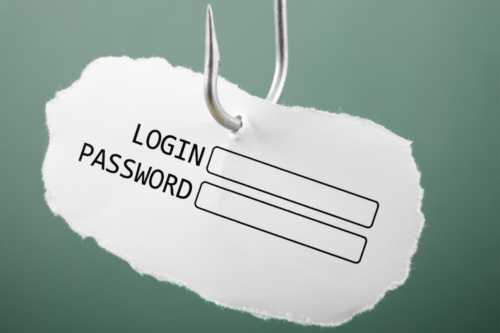What is an Authentication Server?
What is an authentication server?
An authentication server is a component or service that verifies the identity of users or devices attempting to access a system, network, or application. It plays a crucial role in the authentication process, which is the process of confirming the claimed identity of an entity (user, device, or service) before granting access to protected resources.
The primary function of an authentication server is to validate the credentials provided by the entity attempting to authenticate. These credentials typically include a username and a password, but they can also involve other factors such as biometric data (e.g., fingerprints or facial recognition), security tokens, or digital certificates.
When a user or device tries to access a system, network, or application, the authentication server receives the provided credentials and compares them against stored or managed user authentication data. This data can be stored locally within the server or accessed from a centralized user directory or database.
The authentication server employs various authentication protocols and mechanisms to verify the validity of the credentials. These protocols may include standards like the Lightweight Directory Access Protocol (LDAP), Remote Authentication Dial-In User Service (RADIUS), Security Assertion Markup Language (SAML), or OAuth.
Once the authentication server confirms the authenticity of the credentials, it sends a response indicating whether the authentication was successful or not. Based on this response, the system or application can then grant or deny access to the requested resources.
Authentication servers are often used in conjunction with other security measures, such as authorization systems, which determine the level of access granted to authenticated entities, and additional security mechanisms like multi-factor authentication (MFA) to enhance the overall security of the authentication process.
What information do authentication servers look at to verify credentials?
Authentication servers typically look at various information to verify credentials and authenticate users or devices. The specific information depends on the authentication method and protocols employed. Here are some common types of information that authentication servers may examine:
- Username or User ID: The authentication server typically receives a username or user ID as part of the authentication request. This information is used to locate the corresponding user account or entry in the user directory or database.
- Password: One of the most common authentication factors is a password. The authentication server compares the provided password with the stored password associated with the user account. It checks for a match to authenticate the user.
- Security Tokens or Certificates: In some cases, authentication servers validate security tokens or digital certificates provided by the user or device. These tokens or certificates contain encrypted information that can be used to verify the authenticity and integrity of the user or device.
- Biometric Data: For biometric authentication, such as fingerprint or facial recognition, the authentication server may receive biometric data captured by a device. It compares the received biometric data with the stored biometric data associated with the user account.
- One-Time Passwords (OTPs): When using two-factor authentication (2FA) or multi-factor authentication (MFA), the authentication server may require an additional one-time password generated by a mobile app, hardware token, or received via SMS. The server validates the provided OTP against the expected value to authenticate the user.
- Client Certificates: In certain scenarios, client certificates are used for authentication. The authentication server verifies the client certificate presented by the device, ensuring it is signed by a trusted certificate authority (CA) and matches the expected certificate for the user or device.
- User Attributes or Claims: In more advanced authentication scenarios, authentication servers may also examine additional user attributes or claims, such as role-based access control information, group memberships, or specific user characteristics, to make authorization decisions alongside authentication.
It's important to note that the specific information examined by an authentication server depends on the authentication method, protocols, and security measures implemented within the system or application. Different systems may have varying requirements and mechanisms for verifying credentials.
How secure are authentication servers?
Authentication servers can be designed to be highly secure, but the level of security ultimately depends on several factors, including the implementation, configuration, and maintenance of the server. Here are some key considerations that impact the security of authentication servers:
- Strong Authentication Mechanisms: The security of an authentication server relies on the strength of the authentication mechanisms it employs. Using strong cryptographic algorithms, secure protocols, and robust password hashing techniques can enhance the security of the authentication process.
- Protection of Credentials: Authentication servers must ensure the protection of user credentials, such as passwords or cryptographic keys. This involves securely storing these credentials using techniques like salted and hashed passwords or storing them in a secure form that cannot be easily compromised or accessed by unauthorized individuals.
- Defense Against Attacks: Authentication servers should be designed with security in mind, implementing measures to defend against common attacks, such as brute-force attacks, dictionary attacks, and password guessing. Techniques like account lockouts, rate limiting, and intrusion detection systems can help prevent or mitigate these attacks.
- Secure Communication: Authentication servers often interact with clients over networks. To maintain security, the communication between the client and the server should be encrypted using secure protocols like HTTPS or Transport Layer Security (TLS) to prevent eavesdropping, tampering, or man-in-the-middle attacks.
- Regular Updates and Patching: Keeping the authentication server software up to date with the latest security patches is crucial for addressing vulnerabilities and preventing exploitation. Regular updates help protect against known security weaknesses and ensure that the server is using the most secure and stable versions of the software.
- Monitoring and Logging: Implementing robust monitoring and logging mechanisms allows for the detection of suspicious activities or unauthorized access attempts. By monitoring logs and analyzing system events, administrators can identify potential security incidents and take appropriate actions to mitigate risks.
- Multi-Factor Authentication (MFA): Enabling multi-factor authentication adds an extra layer of security by requiring additional authentication factors beyond just a username and password. MFA can involve something the user knows (e.g., password), something the user possesses (e.g., security token), or something the user is (e.g., biometric data).
- Regular Auditing and Penetration Testing: Periodic security audits and penetration testing help identify vulnerabilities and weaknesses in the authentication server. By conducting these assessments, organizations can proactively address security issues and strengthen the server's overall security posture.
It's important to note that while authentication servers can be designed to be secure, no system is completely immune to security risks. Regular security assessments, adherence to security best practices, and ongoing monitoring and maintenance are essential to ensure the ongoing security of authentication servers.
Can authentication servers be compromised?
While authentication servers are designed to be secure, they can still be compromised under certain circumstances. Here are some potential scenarios where authentication servers could be vulnerable to compromise:
- Exploiting Vulnerabilities: Authentication servers, like any software or system, can have vulnerabilities that could be exploited by attackers. These vulnerabilities could be a result of coding errors, configuration mistakes, or outdated software versions. If an attacker discovers and successfully exploits such vulnerabilities, they may gain unauthorized access to the authentication server.
- Weak Credentials: If user credentials stored on the authentication server are weak or easily guessable, attackers may be able to crack or guess passwords using techniques like brute-forcing, dictionary attacks, or password spraying. Additionally, if administrators or users reuse passwords across multiple systems and one system's credentials are compromised, the authentication server becomes vulnerable to unauthorized access.
- Insider Threats: Insiders with legitimate access to the authentication server, such as system administrators or employees, can potentially misuse their privileges or intentionally compromise the server's security. This could involve actions such as unauthorized access, tampering with authentication data, or leaking sensitive information.
- Social Engineering: Attackers may attempt to manipulate individuals with access to the authentication server through social engineering techniques. By tricking administrators or users into revealing sensitive information or granting unauthorized access, attackers can compromise the server's security.
- Malware or Remote Attacks: If the authentication server is exposed to the internet or connected to a network that is compromised, it can be targeted by malware or remote attacks. These attacks can exploit vulnerabilities in the server's software, gain unauthorized access, or tamper with authentication processes.
- Denial-of-Service (DoS) Attacks: Authentication servers can be targeted by DoS attacks that overwhelm the server with a high volume of requests, making it unable to respond to legitimate authentication requests. In such cases, the availability and functionality of the authentication server are affected, potentially leading to unauthorized access or disruptions in the authentication process.
- Weak Security Controls: Inadequate security controls, such as poor access controls, weak encryption, or lack of monitoring and auditing mechanisms, can make authentication servers more susceptible to compromise. Insufficient security measures can enable attackers to exploit vulnerabilities and gain unauthorized access.
To mitigate the risk of compromise, it is crucial to implement robust security measures such as regular patching, strong authentication mechanisms, secure storage of credentials, monitoring and logging, and adherence to security best practices. Conducting regular security assessments and staying informed about emerging threats are also essential to ensure the ongoing security of authentication servers.



